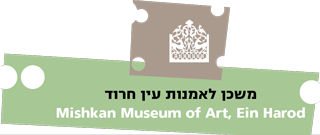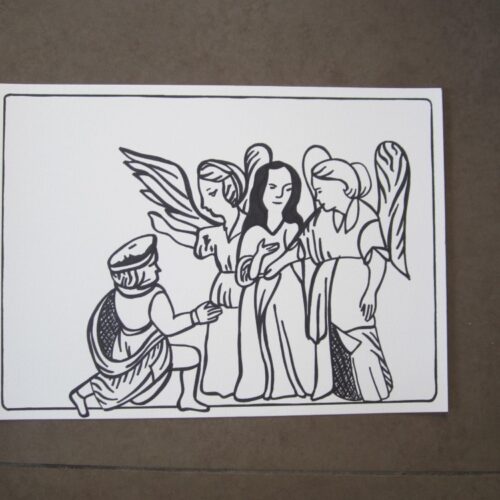
Tseno Ureno is the fourth exhibition in the Judaica Wing that reintegrates women artists into the contemporary Jewish art exhibition program, as a curatorial affirmative action. Many of the artists in this exhibition are members of “Studio of Her Own” – an initiative promoting young women artists from the various sectors of the Jewish Orthodox community. Alongside these artists, also exhibiting are artists who originally presented in Matronita: Jewish Feminist Art –an exhibition of 20 women artists from Israel and abroad focusing on the dissonance between Jewish law and modern life, held in the Mishkan in 2012.
Each of the exhibiting artists addresses core issues of the religious reality in which they live. The exhibition engages with familiar feminist issues such as sexuality, body image and female roles, as well as with themes unique to the Jewish experience: hair covering, agunah, pregnancy and fertility, barrenness and prolonged singlehood. The search for meaning in prayer and ritual and the quest for spirituality and sacredness in everyday life are central to the works exhibited. The visual images are imbued with verbal exegesis, as a natural layer for women versed in Jewish texts.
The name Tseno Ureno – “go out and see” (in the grammatical feminine form) – is borrowed from the title of a popular 16th-century Yiddish book known as the “Women’s Bible” that was intended to teach the Torah to people who could not read Hebrew – at the time, mainly women. The name suggests a battle cry to women to see the world and appreciate the beauty of the Biblical texts. This title is in turn inspired by the following verse in the Song of Songs: “Go forth, O ye daughters of Zion, and behold King Solomon with the crown wherewith his mother crowned him in the day of his espousals, and in the day of the gladness of his heart” (3, 11). Both the verse and the book call upon women in the Jewish community to become active spiritually and intellectually. For the contemporary “daughters of Zion” artists presenting in the exhibition, their color-dipped brushes signify and redefine the materials of their lives and their religious, artistic and gender identity. Their canvases, photographic papers and video screens are new means for making their voices heard.
The exhibition was originally held at the Senate Gallery at Ben-Gurion University of the Negev in Beersheba, where it was curated by Prof. Haim Maor and the curatorial course students. Here in the Judaica Wing, the contemporary artworks are re-contextualized as they enter into dialogue with the Mishkan Museum’s permanent collection of traditional Jewish ritual objects and 19th-century Jewish paintings.
Various Artists
Tzeno Ureno
Curators: Haim Maor, Dvora Liss
September 2017- February 2018










